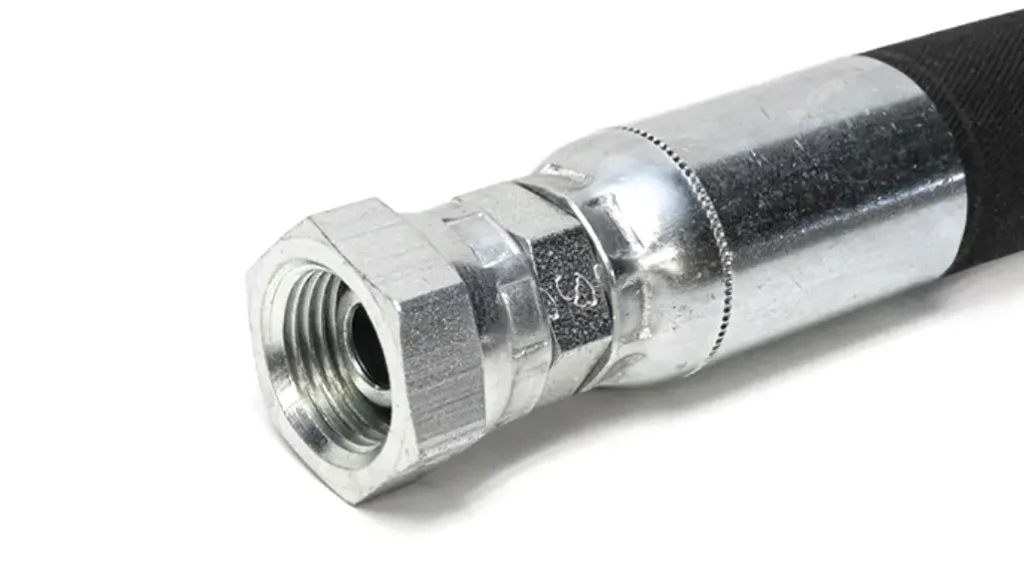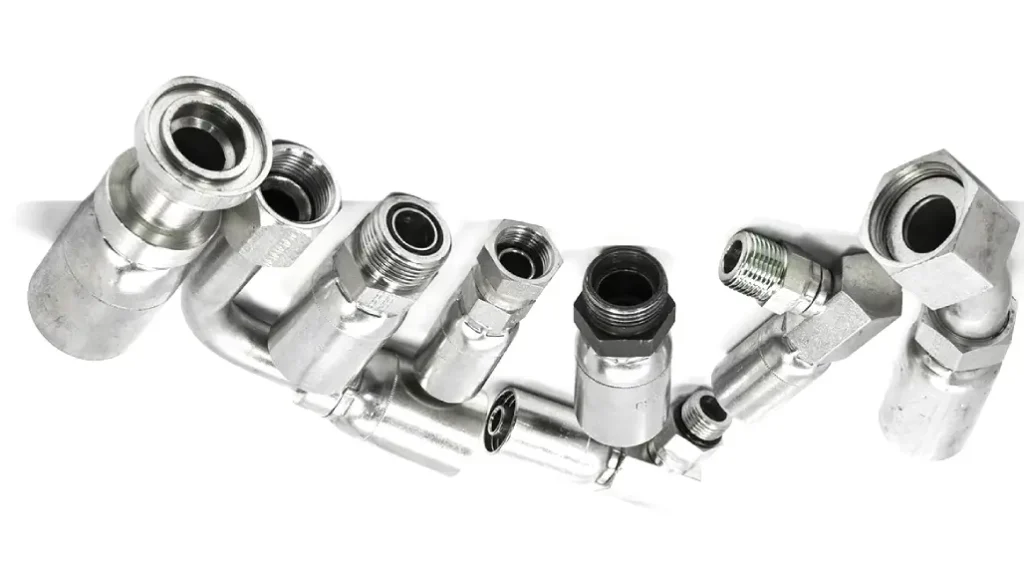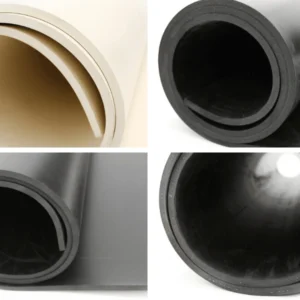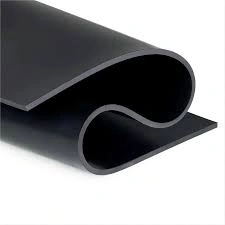Hydraulic systems are the backbone of countless industries, powering everything from heavy machinery on construction sites to intricate medical equipment. A crucial component of these systems is the hydraulic hose coupling, connecting hoses to fittings and ensuring fluid flow without leaks or failures.
This guide will delve into the diverse world of hydraulic hose coupling types, exploring their unique features, applications, and considerations for optimal selection.
We’ll cover a wide range of hydraulic hose coupling styles, including reusable and one-time use options. You’ll learn about the critical factors influencing coupling selection, such as pressure requirements, fluid compatibility, environmental conditions, and safety considerations.
What Is Hydraulic Hose Coupling

A hydraulic hose coupling is a crucial component in any hydraulic system. It’s essentially a connector that joins hydraulic hoses to other parts of the system, such as valves, pumps, and cylinders. These couplings facilitate the smooth and uninterrupted flow of hydraulic fluid, enabling the efficient operation of the entire system.
Hydraulic hose couplings come in various types and sizes, each designed for specific applications and pressure requirements. They are typically made from durable materials like steel or brass to withstand the high pressures and demanding conditions often encountered in hydraulic systems.
Hydraulic hose couplings are designed to connect hydraulic hoses to other components in a system. True
Hydraulic hose couplings are essential components in hydraulic systems. They provide a secure and reliable connection between the flexible hose and other parts of the system, such as pumps, valves, and cylinders.
All hydraulic hose couplings are interchangeable. False
Hydraulic hose couplings are Not universally interchangeable. They are designed to be specific to the type of hose, the working pressure, and the fluid being used.
- Different hose types require different coupling styles and sizes.
- Pressure ratings vary significantly between couplings, and using an incorrect coupling can lead to catastrophic failure.
- Compatibility with fluids is crucial. Some couplings are designed for specific fluids like hydraulic oil, while others are not suitable for certain chemicals.
Hydraulic Hose Coupling Types

How many types of hose coupling are there?
There are numerous types of hose couplings, each designed for specific applications and industries. Some common types include quick disconnect couplings (like camlock and push-to-connect), threaded couplings (NPT and BSP), O-ring face seal (ORFS) couplings, and JIC couplings.
Hydraulic hose couplings are essential components for connecting hoses within a hydraulic system. They ensure the safe and efficient transfer of hydraulic fluid, enabling the smooth operation of various machinery.
Here are some of the most common types:
1. Quick Disconnect Couplings
Ease of Use: These couplings are designed for rapid connection and disconnection, significantly reducing downtime during maintenance or equipment changes.
Types:
- Ball Lock Couplings: Utilize a ball-locking mechanism for secure connection and disconnection. They are widely used in various industries due to their ease of use and reliability.
- Push-to-Connect Couplings: Require minimal effort to connect and disconnect, making them suitable for applications where frequent connections are necessary.
Applications: Commonly found in construction equipment, agricultural machinery, and mobile hydraulic applications.
2. Threaded Couplings
Durability: These couplings feature male and female threaded ends that screw together to form a secure connection.
Strength: Known for their high strength and resistance to high pressures, making them suitable for demanding applications.
Types:
- NPT (National Pipe Thread): A common standard for threaded fittings, offering a reliable seal.
- BSP (British Standard Pipe): Another widely used standard, particularly in European applications.
Applications: Suitable for a wide range of applications, including industrial machinery, heavy equipment, and high-pressure systems.
3. O-Ring Face Seal (ORFS) Couplings
- Leak-Proof: These couplings utilize O-rings to create a reliable seal between the mating surfaces, minimizing the risk of leaks.
- Versatility: Compatible with a wide range of hose sizes and pressures.
- Applications: Commonly used in applications where leak prevention is critical, such as in aerospace, marine, and automotive industries.
4. JIC (Joint Industrial Council) Couplings
- Industry Standard: A widely recognized industry standard for hydraulic couplings, known for their reliability and compatibility.
- Design: Feature a specific angle and thread design for a secure and leak-free connection.
- Applications: Widely used in various industrial and mobile hydraulic applications.
| Coupling Type | Description | Advantages | Disadvantages | Applications |
|---|---|---|---|---|
| Quick Disconnect | Easy to connect and disconnect | Fast and efficient | May not be suitable for all pressure ranges | Construction, agriculture, mobile hydraulics |
| Threaded | High strength and durability | Reliable and secure | Can be time-consuming to connect and disconnect | Industrial machinery, heavy equipment, high-pressure systems |
| ORFS | Leak-proof design | Reliable seal, compatible with various hose sizes | May require specialized tools for assembly | Aerospace, marine, automotive |
| JIC | Industry standard | Reliable and compatible | May have limited interchangeability with other standards | Various industrial and mobile hydraulic applications |
Note: This is not an exhaustive list of all hydraulic hose coupling types. The specific type of coupling chosen will depend on factors such as the application, pressure requirements, hose size, and desired level of performance.
How to Identify Hydraulic Fitting Types?
Identifying hydraulic fitting types involves a systematic approach.
Step 1: Reusable or Permanent
Determine if the fitting is designed for repeated use or is intended to be a permanent connection within the system. This distinction helps narrow down the possible fitting types.
Step 2: Identify Fitting Ends and Port Connections.
Examine the ends of the fitting. Common types include: * Threaded: NPT, BSP, metric * O-ring face seal (ORFS): Utilize O-rings for sealing * Quick disconnect: Designed for rapid connection and disconnection * Flanged: Connect to flanges for larger systems * Hose barb: Designed to be inserted into a hose
Step 3: Identify the Sealing Method.
Determine how the fitting creates a seal. Common methods include:
* Threaded engagement: Threads create a mechanical seal
* O-ring seals: Utilize O-rings for a leak-proof connection * Cone seals: Rely on a conical surface to create a seal
* Gasket seals: Use gaskets to prevent leakage
Step 4: Look at the Fitting Design.
Observe the overall design and any unique features. This may include:
- * Angle: Straight, 45-degree, 90-degree
- * Material: Steel, stainless steel, brass
- * Special features: Swivels, elbows, tees
By carefully examining these aspects, you can effectively identify the type of hydraulic fitting you are working with.
Conclusion
In conclusion, understanding the various types of hydraulic hose couplings is crucial for ensuring the safe and efficient operation of hydraulic systems. By selecting the appropriate coupling for your specific application, you can minimize downtime, prevent leaks, and maximize the lifespan of your hydraulic hoses.
For high-quality and reliable hydraulic hoses and couplings, consider Gushan Rubber. We offer a wide range of products to meet your specific needs, including various types of hydraulic hose couplings, fittings, and adapters. Contact us today to learn more about our products and services.
Visit Gushan Rubber for Wholesale Hydraulic Hoses




